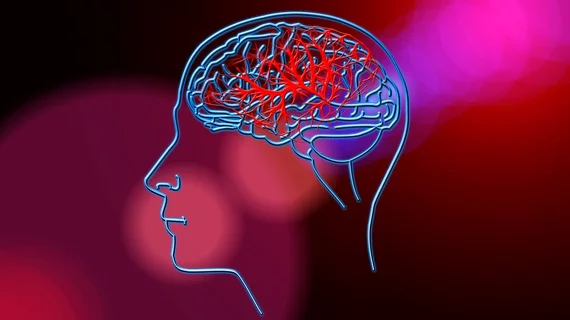More than 1/3 of old strokes are incidentally detected on head CT
Undetected strokes put patients at greater risk of serious adverse events in the future, especially when both patients and providers are unaware that a stroke has ever occurred.
Strokes detected incidentally on head CT scans present an opportunity for providers to initiate preventative measures. A new analysis in the Journal of the American College of Radiology estimates that spotting the signs of a previously undetected stroke could benefit up to 200,000 people in the United States every year by allowing providers to be proactive in mitigating patients’ future risk. Secondary preventative measures could reduce patients’ risk of recurrent stroke by as much as 80%, corresponding author of the new study Long H. Tu, MD, PhD, with the Department of Radiology and Biomedical Imaging at Yale School of Medicine, and colleagues suggest.
"Secondary prevention includes several interventions beyond primary prevention including more stringent goals for blood pressure and lipids or diagnostic tests looking for arterial stenosis or atrial fibrillation,” the group notes. “Therefore, the detection of previously unknown stroke can provide greater utility for patients, even if primary prevention measures are already in place.”
To get a better idea of how common incidentally detected strokes are, researchers retrospectively analyzed all adult head CTs completed at three emergency departments between July and December of 2023. Identified strokes were classified as either known or unknown, and the team conducted an additional subanalysis focused on patient and imaging factors associated with unknown strokes.
The total head CT count was just under 22,000, of which 4% showed signs of an old stroke. Nearly half of the patients with old findings on imaging were unaware that they ever had a stroke. Older strokes were smaller, more often occurred in older patients and were located in the gangliocapsular and cerebellar regions.
“Even silent, or asymptomatic, strokes are associated with risk of future symptomatic stroke, and may guide both patient care or counseling," the authors write. "Patients who have had a known stroke receive secondary prevention and counseling from clinicians at higher rates and are more adherent to lifestyle modifications, compared to those with only a history of transient ischemic attack.”
The group suggested that, similar to things like pulmonary nodules and vascular calcifications, signs of encephalomalacia could also be a target for opportunistic screening protocols.
It is estimated that nearly 800,000 people experience a stroke in the U.S. each year.
Learn more about the research here.

